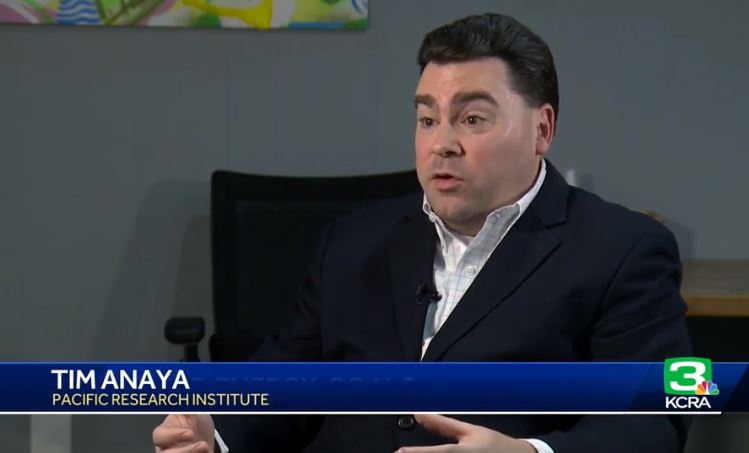The Sacramento Bee recently ran an article with a rather curious headline – “Fix California roads without the new gas taxes?”
Reading the article from our friends at the Bee, they make it seem like funding road repair projects without a tax increase was as foreign a concept as encountering space aliens.
Gas tax proponents have put forward a doomsday scenario that every new road repair project would stop if voters reject the 12-cent-per-gallon gas tax increase this November. This, of course, is not the case.
One point that often goes unmentioned – a significant portion of the gas tax revenue doesn’t go to roads. According to the Governor’s office, $1 billion goes to walking and bicycling infrastructure programs, $250 million goes to local transportation planning grants, and $7.5 billion goes for transit. While these may be worthy initiatives, should we really be spending gas tax dollars on them?
Also, just $2.5 billion is earmarked to “reduce congestion on major commute corridors” – i.e. adding lanes. Much more than that will be needed to reduce traffic gridlock.
With another year of record state tax revenue in the books – and state tax revenue continuing to increase – it is quite easy to fund road repair and highway construction projects without a tax increase. It requires the Legislature to have the will to make it a budget priority, which they have failed to do until now, absent a massive tax increase.
In fact, several measures have been proposed in recent years to generate new funding for road and highway projects without new taxes. Here’s a few of the best ideas:
Current Legislative Session
- Earmark Sales Taxes from Car Sales for Roads (Assembly Bill 496 – Fong): This Traffic Relief and Road Improvement Act would provide $5.6 billion a year for roads by dedicating existing sales taxes charged for new and used car sales to road projects. It would also reform state environmental rules to speed up road projects, allow for public-private partnerships to ensure road dollars are spent more efficiently, and ensure at least 30 percent of this revenue goes to adding highway lanes.
- “2-2-2 Plan”: Senate Republican Leader Patricia Bates and her caucus this year championed a 2-2-2 approach to the state’s 2018-19 budget surplus – dedicating $2 billion of this year’s surplus to rebuilding infrastructure, including local roads.
- Restoring Vehicle Weight Fees for Road Repair (Assembly Bill 351 – Melendez): As part of a controversial gas tax swap enacted during the 2010 budget crisis, vehicle weight fees that are paid by truckers to maintain the state’s highways have been redirected to pay down transportation bond debt and provide some General Fund relief. This budget scheme is no longer needed in a time of budget surplus. Recapturing these dollars and spending them as intended would provide about $900 million in annual funding for highway projects.
Past Legislative Sessions
- Let the Voters Decide on High-Speed Rail’s Future (Assembly Bill 2650 – 2013-14 Session): What should be low-hanging fruit in the transportation funding debate is to ask the voters to decide whether they want to cancel the controversial high-speed rail plan and instead repurpose the billions remaining high-speed rail bond funds for roads and highways.
- Investing Cap-and-Trade Funds for Transportation (Assembly Bill x1 17 – 2015-16 Session): This proposal would invest 40 percent of Cap-and-Trade dollars in transportation infrastructure. If Cap-and-Trade aims to reduce greenhouse gas emissions in California, then it makes sense to invest some of these dollars in our roads. If cars can travel 70 miles per hour instead of crawling along in traffic gridlock, we’ll see increased fuel efficiency and lower emissions.
- Eliminating Cal Trans Redundancies (Assembly Bill x1 15 – 2015-16 Session): A few years back, the nonpartisan Legislative Analyst’s office recommended eliminating 3,500 redundant positions at Cal Trans. According to their recommendation, cutting these slots will not negatively impact any construction projects. Doing so will generate $500 million annually that could be used for road and highway projects.
Tim Anaya is communications director for the Pacific Research Institute.

